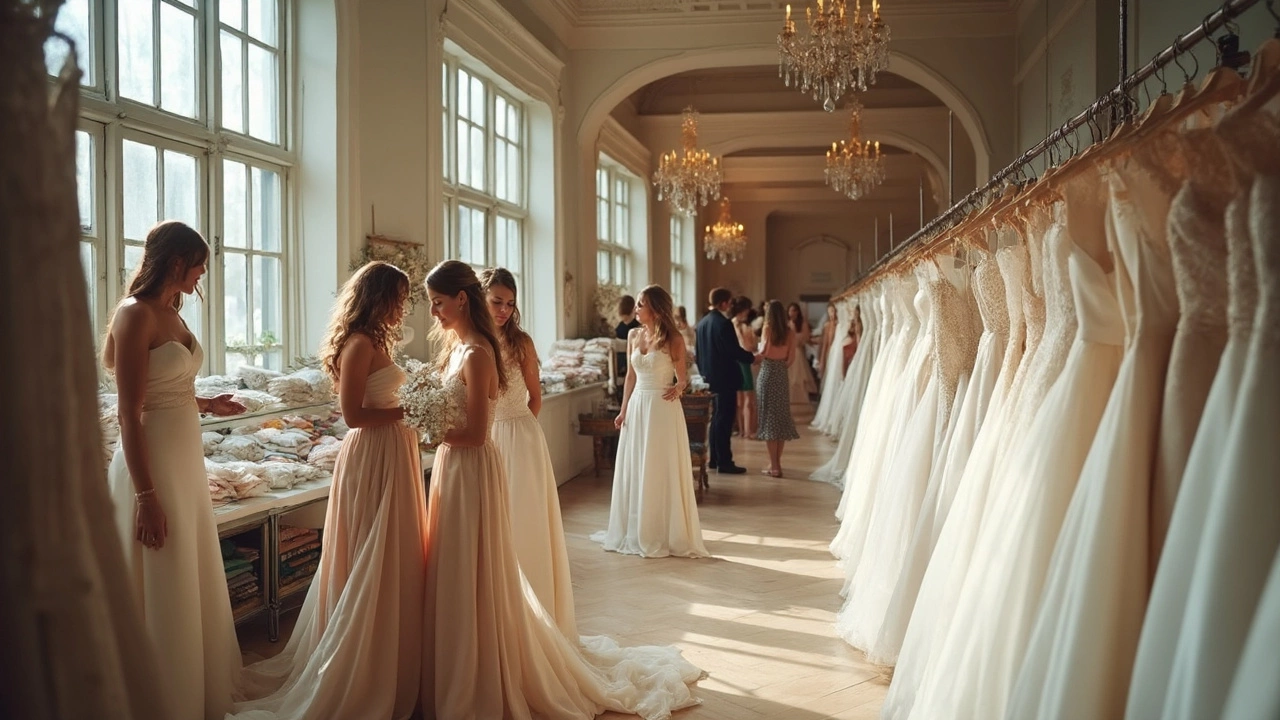Wedding Dress Budget: How to Get the Perfect Gown for Less
First thing’s first – decide how much of your total wedding budget should go to the dress. Most couples aim for 10‑15% of the overall spend. If your total budget is £30,000, that means about £3,000‑£4,500 for a gown. Knowing this number helps you avoid eye‑popping price tags later.
Next, write down what matters most to you. Is it the fabric, the silhouette, the designer label, or the sparkle? Ranking your priorities narrows the search and prevents you from chasing every trend that pops up online.
Shop Smart, Not Hard
Start with sample sales. Bridal boutiques hold these events twice a year, and you can try on dresses that were used for fittings. Prices are often 30‑50% lower than retail, and the dress still looks brand‑new. If you’re flexible on size, a sample might be the perfect solution.
Don’t overlook online retailers. Many sites offer free returns and detailed size guides. Look for reviews that mention how the dress fits real bodies. Buying online cuts out the boutique’s overhead, saving you cash.
Alternative Options That Look Luxe
Consider renting. Rental companies keep gowns in pristine condition and let you wear a designer dress for a fraction of the purchase price. Most rentals include alterations and cleaning, so you avoid hidden costs.
Second‑hand stores and vintage shops are treasure troves. A gently used dress can be altered to fit your measurements, and you’ll have a one‑of‑a‑kind look. Remember to budget a little extra for tailoring – usually £100‑£300 depending on the work needed.
Off‑season buying is another money‑saving trick. Many boutiques discount their inventory after the wedding season ends (October‑March). You’ll find fresh stock at lower prices, and the staff has more time to give you personal attention.
Finally, think about fabric. Silk and satin feel luxurious but can be pricey. Tulle, chiffon, or organza often cost less while still offering that romance factor. Pair a simple silhouette with a standout detail like lace sleeves or a beaded belt to make the dress feel high‑end.
When you’ve narrowed your options, schedule appointments with two or three boutiques. Bring photos of dresses you love, but stay open to suggestions. The right consultant can point you to hidden gems that fit your budget and style.
Don’t forget the hidden costs: under‑garments, veil, shoes, and accessories. Set aside a small portion of your dress budget for these items, or shop for them during sales to keep the total spend low.
In the end, the perfect wedding dress is the one that makes you feel confident on your big day, not the one with the highest price tag. By planning your budget, prioritizing what matters, and exploring smart alternatives, you can have a stunning gown without blowing your savings.

- Jun, 15 2025
- Comments 0